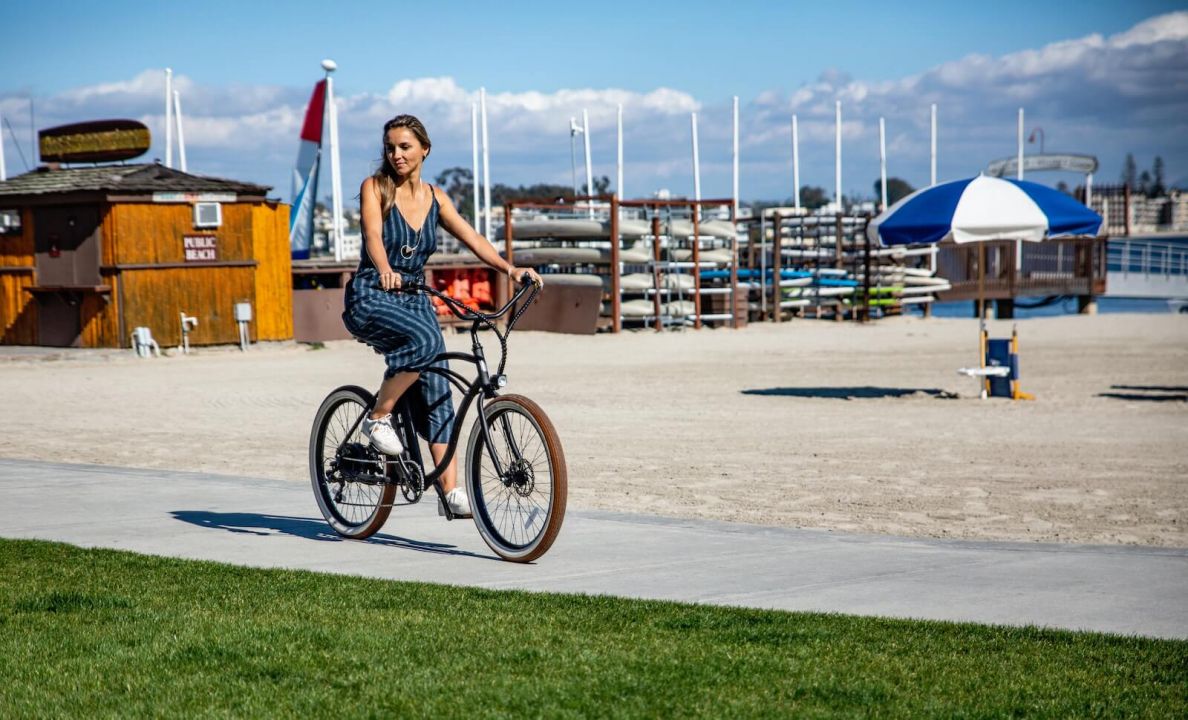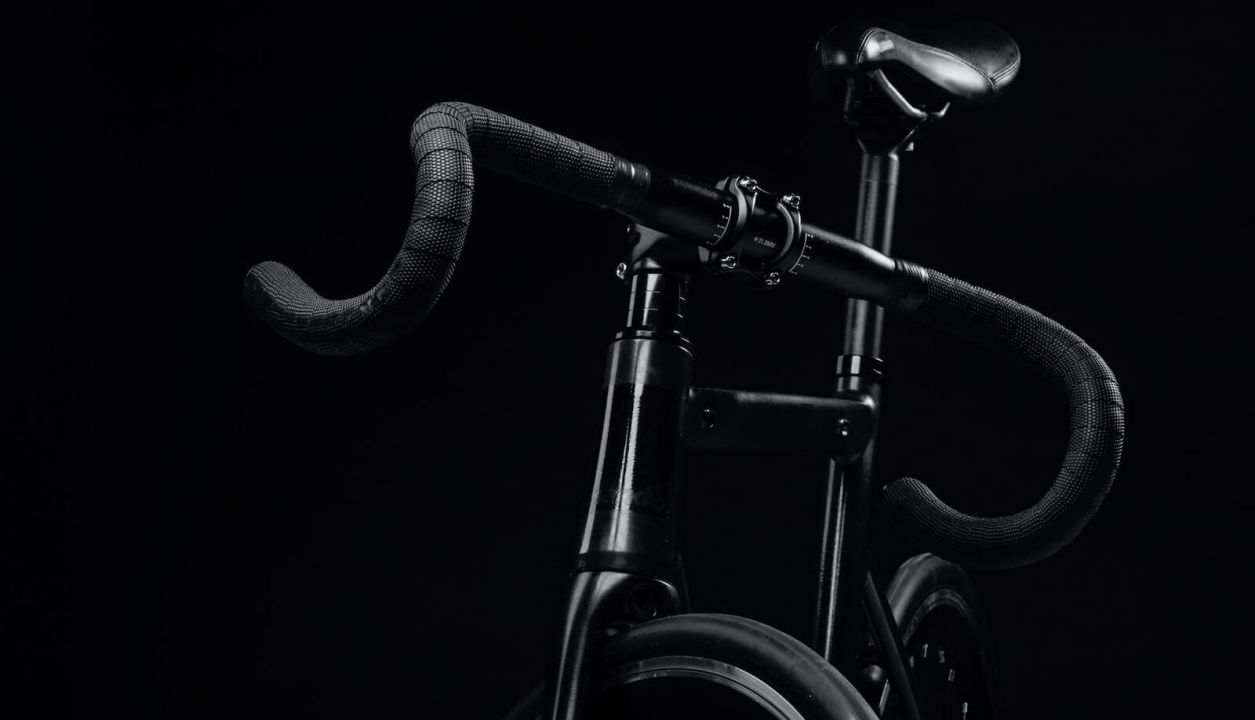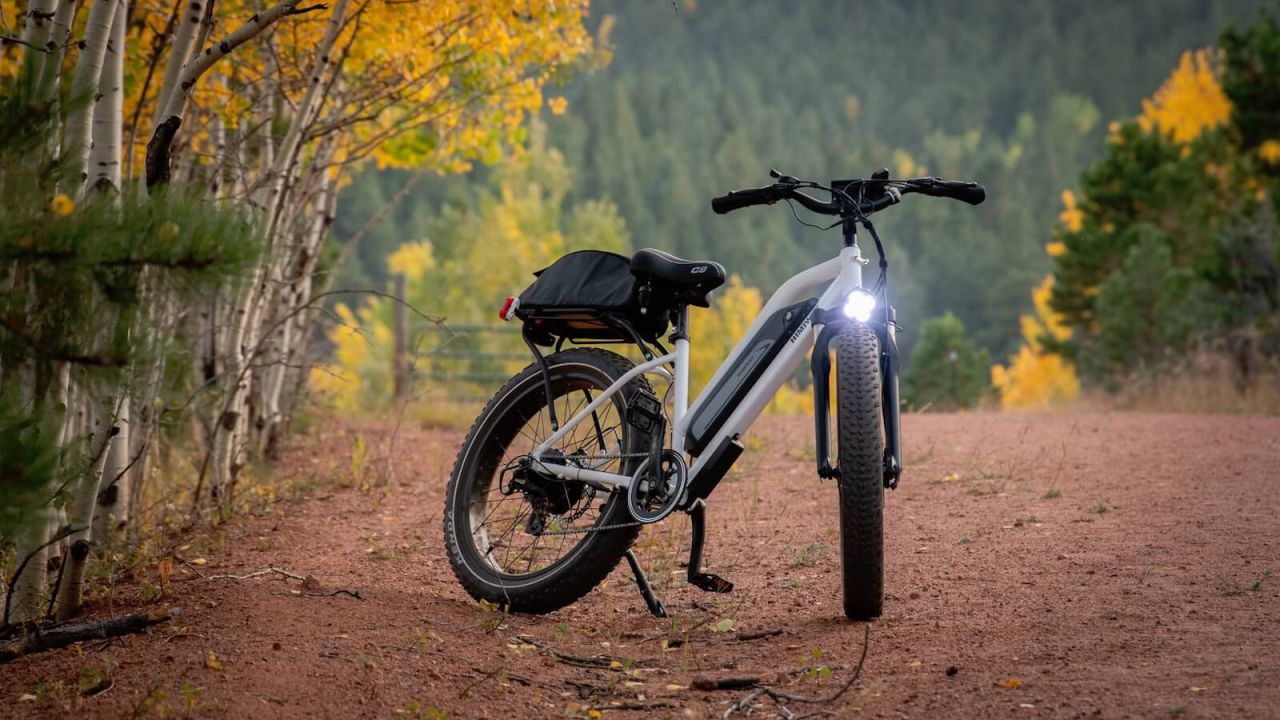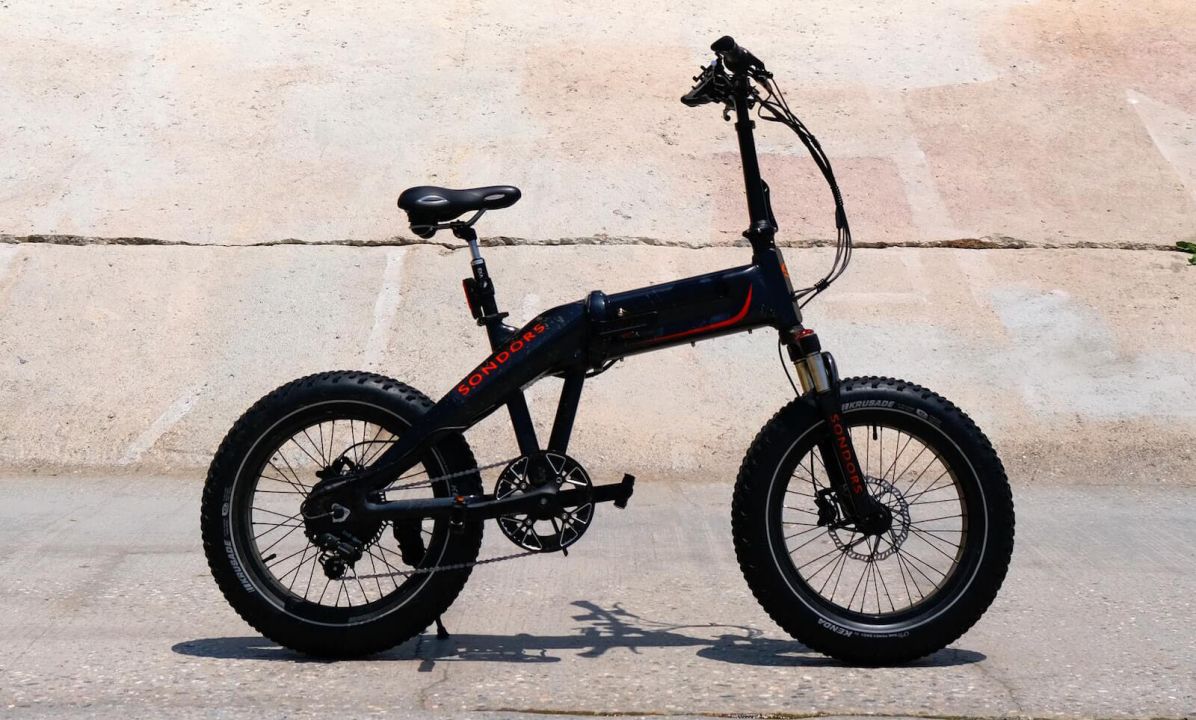Summary
Has the idea of buying an e-bike been nudging you recently, but you feel you would like to evaluate all the benefits, options and alternatives before making your final choice? Are you new to the world of e-bikes, and you would like to learn the basics? Have you been loving your regular bike, but you would like to switch to better performance and faster speed?
You are not the only one. E-bikes have become increasingly popular during the past years: yet despite that, many people still don't know a lot about them.
If you want to learn everything you need about electric bikes, then this article is for you. Let's get in deep and uncover all the elements and traits that have turned electric bikes into an ideal (and eco-friendly) investment for so many people.
Introduction
Bicycles are the epitome of transport efficiency, physical well-being and eco-sustainability – plus, obviously, a safe resource if you are looking for a lot of fun.
An electric bike – also called an e-bike – is a regular bike with an electric motor that has been added to assist the cyclist during pedalling, making cycling 'assisted' and easier.
To be more specific, an electric bike is a hybrid form of transport that combines the power injected by the rider during the ride with the one coming from a motor. The latter applies a speed of up to 15.5mph, which is considered the legal speed limit according to the current regulations in the UK and EU. When a cyclist is pedalling beyond that speed, the motor will stop assisting during the ride.
The evolution of electric bicycles laid its foundation in the United States back in 1895. During those years, many designers focussed on creating electric vehicles that could speed up the ride while making it easier at the same time, inventing models that followed more or less the same fundamentals of layout and operation as the present mid-drive motors that we see on some bikes today.
Fast-forward to today, there are now over one billion bicycles in the world; and we expect to see 40 million of them ruling the streets of the globe by 2023, turning our cities into more sustainable ecosystems.
In this Karfu article, you will learn about all aspects related to an electric bike, exploring the world of e-bikes from every angle. We will delve into its history, and discover the multiple uses, the components and their typical features, maintenance basics, the diversified models, and finally, the options and costs for every need.
Because at Karfu, we want to provide you with the necessary instruments to know, evaluate and consciously choose the right e-bike for you.
E-bike: what is it?
The electric pedal-assisted bicycle is a hybrid vehicle that combines our muscle force with electrical power. The additional thrust only kicks in when we are pedalling, helping us to maintain a lower and more consistent effort level during the ride.
Many names and acronyms can define an electric bike: e-bike (Electric Bike), Pedelec (Pedal Electric Bike) or EPAC (Electrically Assisted Pedal Cycles). Yes, the names are different - but if the assistance only kicks in while you are pedalling, then we know it's the same thing we are talking about. If you’d like to get more information about each specific classification within the class of e-bikes, you can have a look at this article.
A brief history of e-bikes
The history of electric bicycles is long and dates to more than 100 years ago. We could almost trace its date of birth back to 1895 – when the American inventor Ogden Bolton Junior patented his first model of a battery-powered bicycle. The design was simple: a hub motor mounted inside the rear wheel and a battery installed inside the central part of the frame. In 1897, Hosea W. Libbey of Boston created an electric bike equipped with two motors, positioned in the hub of the crankset axle.
After him, many others followed in the same footsteps in trying to design the perfect e-bike. Even Howard Hughes, the business magnate, developed his version of a motorized bike in 1913 when he was only 13 years old.
Thirty years later, the Anglo-American designer Ben Bowden created the Bowden Spacelander. "The bike of the future", with its radical futuristic and industrial design and a tiny motor to give riders an extra boost when riding uphill, is considered the first electric bicycle model and a fundamental precursor to our modern standards.
Today, the electric bicycle with pedal assistance is at the height of its technological and cultural evolution. It is the undisputed protagonist of major events and trade fairs, such as Eurobike, held in Friedrichshafen, Germany, since 1991, or the Verbier E-Bike Festival, created by the organisers of the Freeride World Tour.
Who are electric bikes for?
But who are electric bikes for? To give a simple answer by way of example, anyone who would like to spend less effort when pedalling into town, arriving at work without breaking a sweat, should try an e-bike. But the truth is that people all have slightly different priorities; there are so many different ways an electric bike can become an efficient solution for improving your life. Here are some of them:
-
To cover distances in a short time: of course, by using electric help, we are able to cover more kilometres and reach places that are unexplored or difficult to access because of challenging climbs.
-
To travel comfortably: when we travel, we no longer need only think of just cars or motorbikes: an e-bike is a perfect means of long-distance transportation. Bike touring and Bike packing are quintessential travel experiences, but previously the realm of enthusiasts. Now that has all changed: simply embrace the comfort of an e-bike.
-
To give electric assistance for disability: cycling is a great option that can help people with disabilities keep engaged with the sport and maintain their well-being.
-
For training and fitness purposes: those who can’t stand the daily grind of the gym can mix it up with the pleasure of riding an electric mountain bike, (or eMTB), in the company of others. Competitive cyclists can also benefit during training on the uphill gradient, with a more even effort between upper and lower limbs, and on the downhill gradient, through riding a more physical and heavy training bike.
-
As an efficient means of transport: the electric bicycle is also used in the workplace as a means of transporting goods or people, especially in urban environments where the car cannot access pedestrian and velocipede areas.
-
For rehabilitation purposes: electric bikes are recommended as a rehabilitation option, specifically for lower limb injuries during physiotherapy.
-
To open the doors to physical well-being for all ages: an electric bicycle makes exercise accessible to all age groups. It gives the typical feeling of freedom of cycling without having to exert too much effort. The weight of the bike magically becomes lighter. Riding an e-bike is fun instead of tiring.
-
To support the planet and the environment: Let's not forget that the e-bike is still an environmentally friendly and highly efficient vehicle. It produces such minimal waste compared to a combustion car and offers infinite recycling solutions. Lithium-ion batteries can be reused with the help of modern recycling processes, with a rate of almost 90%. Choosing an electric bicycle is helping to slow down the pollution process, making a real difference to the environment.
Where can I use an electric bike?
Focusing on legislation, the electric pedal-assisted bicycle benefits from the same advantages as a velocipede. Basically, with an e-bike, you can ride in bicycle lanes and restricted traffic zones. You won't need a driver's license or a number plate. You won't need obligatory insurance either, or a helmet (although we highly recommend always using one).
The UK has its own e-bike law but has mostly fallen into line with the EU over the past decade. The EN15194 regulations for pedelec bicycles are pretty substantial but the
main highlights of the legislation include the following specifications to ride an e-bike:
-
The e-bike's motor has to have a continuously rated power of 250W or less
-
It must be assisted only when the rider is turning the pedals
-
The maximum assisted speed can't exceed 15.5 mph
If your e-bike doesn't follow these specifications, it will be regarded as a moped without a license plate and insurance, and if caught you might incur a penalty – which could be high and could include both civil and criminal law. So watch out for the rules when you are on the road. Are you curious to know everything about the legal side of e-bikes in the UK? Then this article is for you.
Electric bikes: the components
So what's an e-bike made of? An electric motor, a battery, handlebar controls and a series of sensors and control electronics - known as a control unit.
There are many different components for a multitude of choices - you can position each element in different sections of the e-bike. An e-bike has an increase in weight compared to a regular bike, spanning a range that varies from 3 to 6 kg; that’s why it needs to be supported by a solid frame, adequate braking system, well-adjusted suspension and strong tyres.
Motors
The motor defines an electric bike: it’s the essential part. It is the ‘engine’ that makes the e-bike go faster, offers special assistance to your pedalling and makes the ride super-pleasurable and effortless. Depending on the model, it could also power the bike on its own (but this is only the case of s-pedelecs, not regular e-bikes). The motor is usually installed in the hubs of the front and rear wheels or woven into the frame.
Motors are available in different power and torque (rotational force) ranges, but most of them are only able to bear speeds of up to 20 mph in most cases - which is plenty given the current UK law. There is a massive variety of choices when considering: we will list the most popular options later.
Batteries
Electric bikes function thanks to the power of rechargeable batteries and battery packs that power the motor. There are different types of batteries; the most common are:
-
SLA: the acronym stands for Sealed Lead Acid Batteries – they are the cheapest on the market, so perfect if you are approaching the world of e-bikes for the first time. An SLA is enough for 500-600 charges of an e-bike.
-
NiCd: Nickel Cadmiums have more capacity than SLA batteries, but they are expensive and hard to recycle and are soon to be extinguished from the market
-
NiMH: Nickel Metal Hybrids are more powerful than Cadmium batteries, easier to reprocess and better for the environment, although pretty expensive
-
Li-ion: Lithium-ion batteries – these are the same ones you can find in smartphones and notebooks; with an increased recharge power, a Li-ion battery can withstand 1000 charging cycles. The efficient charging power makes it one of the most expensive batteries.
The battery’s lifespan depends on how you treat and maintain your bike – and, of course, the specific type of battery. Usually, it will last up to three years when well kept and recharged with care. It’s crucial to find a good value battery: it represents a third of the entire value of your bicycle and increases in proportion over the years as the item depreciates.
An electric bike battery doesn't require you to know sophisticated procedures of installation: unless it is not removable, you can remove the battery from the e-bike or charge it directly in the e-bike holder,. It usually on average takes between 2-6 hours, but this is not a rigid period - and because it is removable you will never need to look for a dedicated vehicle charging point as you would do with an electric car.
In the early days of electric bikes, there weren't many choices for batteries. Now, many major companies have started to populate the market with innovative solutions and many models to choose from, giving a wide selection – in particular offering a broad range of power options.
Controllers
Controllers are the part of the bike that requires a bit of scientific knowledge, so we will only briefly touch on this feature in this article, and focus on them later (new report). An essential thing to note however is that each controller is specifically created to function with one particular motor. Controllers can be considered the “heart” of the entire bicycle, as they connect all the electrical components and distribute the energy from the battery pack to reach the motor directly. Sending signals to the bike’s engine via varying voltages, it detects the speed and thus regulates the motor for uninterrupted performance. In the same way, it also acts as a dynamic brake.
Familiarising yourself with your controller is essential. The more you become aware of its function, the better you will be able to forge a fluid ride that works more efficiently with the engine.
Choosing your e-bike: what’s the best option for you?
Nowadays, an incredible choice across the market allows us to discover designs tailored for almost all specific use-cases and customer expectations. Still, purchasing an electric bike can be an expensive investment that requires some brain work before reaching a final decision. We must ask ourselves the ultimate question before committing to a purchase: "Where and how will I use it?".
Your personal habits and patterns (commuting to work, riding long journeys during weekends, and so on) are the best guides to start from when choosing the right electric bike for you. A perfect e-bike should be flawlessly tailored for its owner: so don’t stop at the first option. When selecting a bike, consider your needs, hobbies, and of course, your budget: they will help you understand what type of e-bike and components are more appropriate for your needs.
Electric bikes: styles and models
So you are looking for an e-bike? You’ll be spoilt for choice. There is an e-bike for any taste: whether you are looking for something traditional or techier, to shred some fat or simply commute to work without no fatigue, there’s an entire world out there made of exciting options.
Electric Mountain Bike
The electronic version of the mountain bike (or e-MTBs) is a perfect choice if you value an excellent, time-efficient riding experience for any terrain. In particular, electric mountain bikes are perfect if you want to ride on steep trails and enjoy high climbing power – you will be able to tackle the most challenging trails without sacrificing speed.
These models usually have their motor built into the inside of the frame where the cranks are - in order to give extra protection - providing power when pedalling as if you had supercharged legs. Worth a try if you are a veteran in the field.
Electric Road Bike
An electric road bike is an efficient regular bike, refined with a powerful pedal-assist motor and battery. The structure is agile and sporty, with skinny tyres and drop handlebars that will enhance speed and adaptability. In short, a classic.
Electric Hybrid Bike
A hybrid bike is usually a mix between a road bike and a mountain bike, and the electric version is no different (just electric). Mixing the best of both worlds will allow you to enjoy all the best bits in one model, with comfort and versatility. A hybrid bike is an excellent vehicle to commute to work efficiently and complements the build and design with speed and power that will enable you to travel the world around you after your job is done.
Electric Fat Bike
If you plan to travel around rugged terrains like mud, sand and snow, an electric fat bike could be your best investment.
The vast and oversized tyres and the strategic tread design provide these bikes with the extra strength a mountain bike couldn’t handle – making riding on those surfaces more viable, thanks to the supplementary motor in the mix that will turn the bike into a formidable vehicle that will take you anywhere with ease.
Electric Cruiser Bike
If you are looking for a laid-back experience, an electric cruiser bike will help you create that casual, holiday atmosphere where you can imagine yourself riding through panoramas at sunset on a boardwalk next to the beach.
The riding experience is easy and maintains a good coasting speed with light pedalling, making it perfect for a relaxing experience.
Folding Electric Bike
The perfect solution for commuters, folding bikes and electric motors define the ideal match. Their compact design makes these bikes manageable in every situation, allowing you to fold them up to 1/3rd of their normal size, an irreplaceable and super versatile solution if you have limited storage or you need to leave them in your office. The efficiency in their design combines with the added pedal power and speed from the engine for a surprisingly nippy ride.
The motor of an electric bike: the options
Returning to e-bike motors, we can safely say that this category includes a vast world of sub-categories of engines with different characteristics. To avoid complicated explanations, if you are new to e-bikes, you only need to know that there are two main types: hub and mid-drive motors.
Hub Motor
The term 'hub motor' (also called wheel motor, or hub drive) refers to those electric bike motors that are directly integrated into the hub of the wheel, propelling and assisting the bike through direct pedalling. They can be installed in both the front and back wheel – although usually, the back is where you will mostly find them. Hub motors are divided into 2 sub-categories:
-
Direct drive hub motors use the whole hub shell as their electric motor. They are the quietest of all the engines and are constantly engaged during the entire pedalling action. The good side of it? You will get some regenerative braking power if you stop pedalling.
-
Geared hub motors are small and lighter than direct-drive motors, and use a system of gears installed in the hub itself. They have a freewheel, so there is no resistance if the engine is not in use. Usually louder than direct-drive motors, they allow the motor to work more efficiently, although they are not considered a very durable option.
Hub motors tend to generally represent the cheapest option, as they are pretty versatile and easy to manage, but not very reliable for the long run. They are the best solution if you are new to the world of e-bikes and would like to experiment with components without emptying your wallet.
Mid-Drive
Mid-drive motors are installed on the cranks of the bike, driving the rear wheel directly through the chain, and usually use torque and cadence assisted pedalling. They represent a more sophisticated version when compared to hub motors, and they offer a more “natural” pedalling experience.
Since the motor is located on the cranks of the bike, it ensures a low and centred weight distribution. This helps improve the overall manoeuvrability of your electric bike, distributing the weight more efficiently.
Mid-drive motors are definitely the perfect feature for mountain bikes, as they can take advantage of the bike's lower gears and keep their speed in an efficient range without 'bogging down' like a hub motor. That will allow you to experience a pleasurable ride if you cycle in areas that constantly have long, steep climbs.
The way the mid-drive motor is located facilitates practical actions: you will be able to change a flat tire in no time.
It seems that the future of e-bikes will feature mid-drive motors as the main protagonist on the scene, so if you are looking for a long term investment, this might be your go-to choice.
What battery should you choose for your e-bike?
The choice of battery is significant because the reliability, range and manoeuvrability of the electric bike depend heavily on it. There are just two main factors we need to evaluate: the battery's chemistry and the positioning on the bike.
The chemistry determines the electrical performance, while the position affects the ease of riding. Today's most popular battery chemistry is Lithium, which provides high performance with low weight.
What are the best battery positions for e-bikes?
The battery should be located as close as possible to the ground, and on the central axis of the vehicle - that is, where the motors are. The low position is because when you turn by tilting the e-bike, you will move less mass. The central position, because on uneven ground the only area of the bike that tends to stay still is around the bottom bracket.
That's why it would be preferable to install your battery on the down tube (instead of the water bottle) as it will be relatively low and in the middle - whereas the same cannot be said for the battery on the rack. Bikes with a battery on the handlebars are not the easiest choice, as the weight is high and unbalanced on the front, which slows down steering.
Some models present the battery as integrated into the hub incorporated with its motor, creating a type of aesthetics that gives the bike a cleaner and more essential look. The bad side of it is that all the weight in the rear hub can make the wheel very heavy and more difficult to manage.
The battery in the rucksack is a different matter, as it is not on the bike and is the only position that leaves the electric bike free from any impediment. With this configuration, we obtain excellent manoeuvrability with a minimum increase of 2 kilos in the backpack.
The battery should be as close to the body as possible, flat, covering the whole surface of the pocket in which it is contained and guaranteeing maximum safety. It is best to have shockproof and fireproof protection between the battery and your back. The electrical wire coming out of the backpack will pass behind you, and in addition to being elastic, it should have a safety connector that will detach in the event of a fall without tearing.
How much does an electric bike cost?
So, you are convinced: you are ready to buy your first electric bike. Before you head to buy your first electric treasure, you should bear in mind that prices on the market vary considerably, as does the quality of the components - consequently, of the vehicle itself. On Amazon you might find e-bikes from as little as £400 that look like proper bargains - are they, though?
Considering the most expensive vehicle on the market today, is around £80,000, it’s always a wise option to contemplate the idea of comparing different prices and models first, to find your own balance between design, practicality and performance.
Not necessarily a bike that costs less than £600 will turn into a useless purchase or leave you stranded. In fact, it could totally be the opposite case: you might be properly satisfied - although we are pretty sure that basic prices mean basic products. Although this kind of budget may even appear high if you are interested in purchasing a normal bike, the situation changes completely for an e-bike. Let’s say though, that if you don’t ride your bike incessantly, don’t ride long distances on complicated trails, always stay on the flat and take good care of your bike, a budget e-bike could last you for years.
Unfortunately, however, you won’t find many low-priced solutions where quality is prioritised. The reason? The components alone can be rather expensive, mainly because of their quality and performance. And if you struggle with finding a battery on the market that costs less than £300, sourcing an entire vehicle for a little more than that is going to be a proper challenge. An e-bike presents a wide range of components: a motor, controller, a handlebar display etc. If you find a bike that costs like one of those components alone, chances are you are making the wrong purchase.
A good starting price for an ebike is somewhere around £1000. A lot of companies use this price as a set base to match the Cycle To Work voucher scheme, allowing potential customers to purchase good quality products. Remember: with a limited budget it is vital to think about the foundations of your high quality ebike: analyse every component, and always check the manufacturer you are buying from.
If you have more money to spend, the plot thickens and you'll certainly be able to find a wide range of possibilities that extend into completely new models and enhanced performance, leaving you with a wide choice and excellent quality.
Electric bikes: maintenance
Like any other bike, e-bikes need some basic maintenance to keep them running smoothly. From checking the tires and brakes to cleaning and charging the battery, there are always some extra tips for keeping your e-bike in good shape. The extra care mainly centres around the batteries and a little on motor maintenance, depending on the type.
Your priority, however, should be on storing and caring for your battery unit properly. A good piece of advice if your bike has a lithium battery set up consists in always fully recharging your battery - even if you’ve only used a little of the available power. This will help to preserve the battery cells at a low percentage for longer periods of time.
Your battery container needs to air out thoroughly to avoid the compartment suffering corrosion from moisture. Every month you should remember to unplug the battery, and eliminate any sign of corrosion using a brush and carbonated water; this will keep your battery like new.
You don't need to perform any particular care for your motor, but give it a look to make sure it's not damaged and that it's performing as usual. Mid-drive motors may need a professional service from time to time, as they are more complicated than hub motors.
Take care of your e-bike regularly: check all components, from tubes to brakes, to make sure they are super functional as on the first day.
A final note
Electric bikes and bicycles alike serve a multitude of purposes in our contemporary society, and it's not surprising that they are on the rise. They represent the main protagonist in a world with zero emissions, clean air and healthy living cities, and a gem in technology development. With so many models and styles, there is definitely a bike out there that will make your dreams come true.
FAQs
Are there different types of e-bikes available?
There are all kinds of e-bikes: fat bikes, hybrid bikes, road bikes for all types of terrains and purposes, or if you commute to work and you need a regular boost to your pedalling. Foldable bikes are also an excellent choice in this case, as they provide an incredible adaptable solution when your space is limited.
How much do e-bikes cost?
On the market you will find a vast range of e-bikes: with pedal assistance, city bikes or mountain bikes are three of the many categories to dive in and find the perfect one for you. The price of electric bicycles can vary significantly from 400 pounds to over 10.000 pounds for highly professional, high-performance bikes.
How far can I cycle before recharging?
In general, an electric bike with pedal assistance has a reasonable range: approximately 70 to 120 kilometres using a 500 watt-hour battery, and 50 to 80 kilometres with a 250 watt-hour battery.
How long does it take to recharge the battery?
The charging time depends on both the capacity of the battery and the charging current of the charger. In general, the larger the battery capacity, the longer the charging time. As a guideline, a full charge generally takes between 2 and 6 hours.
What are the running costs of e-bikes?
A recharge will be required more or less every 2 days if you use your e-bike regularly, so 15 recharges per month, or 75 pence per month of electricity consumed, translating into a total of fewer than 10 pounds per year! All in all, a minimal expense that is likely to go unnoticed in most cases.
How fast can e-bikes go?
In the UK, the maximum power is 250 watts, reaching a maximum speed of 15.5 mph.








